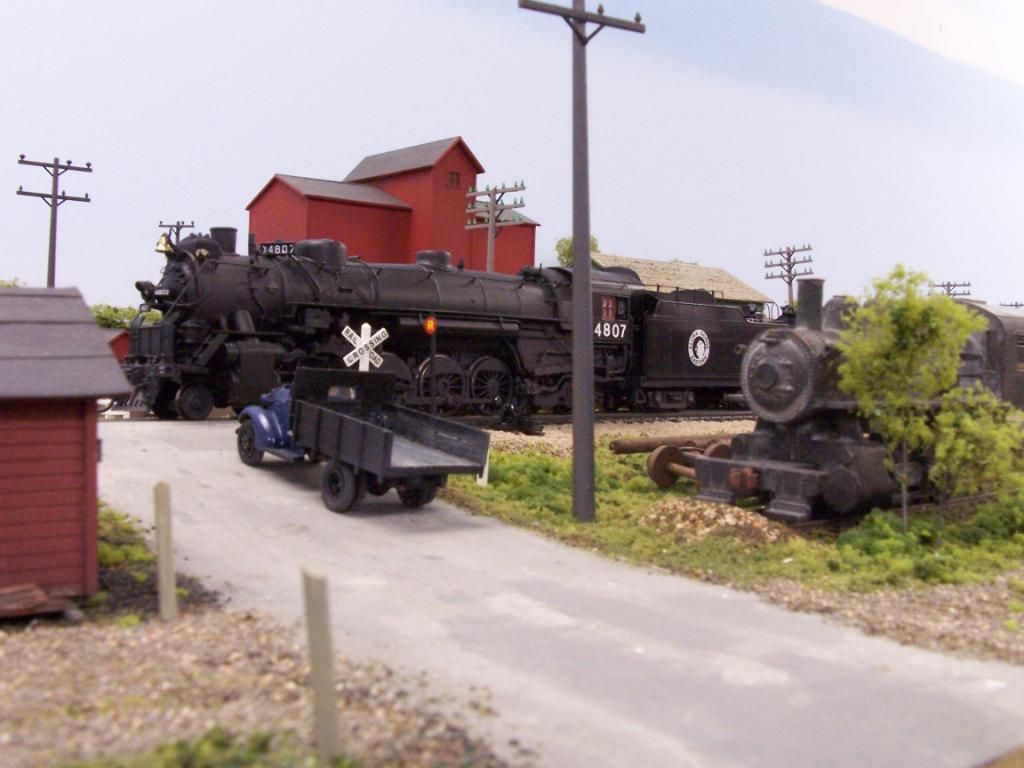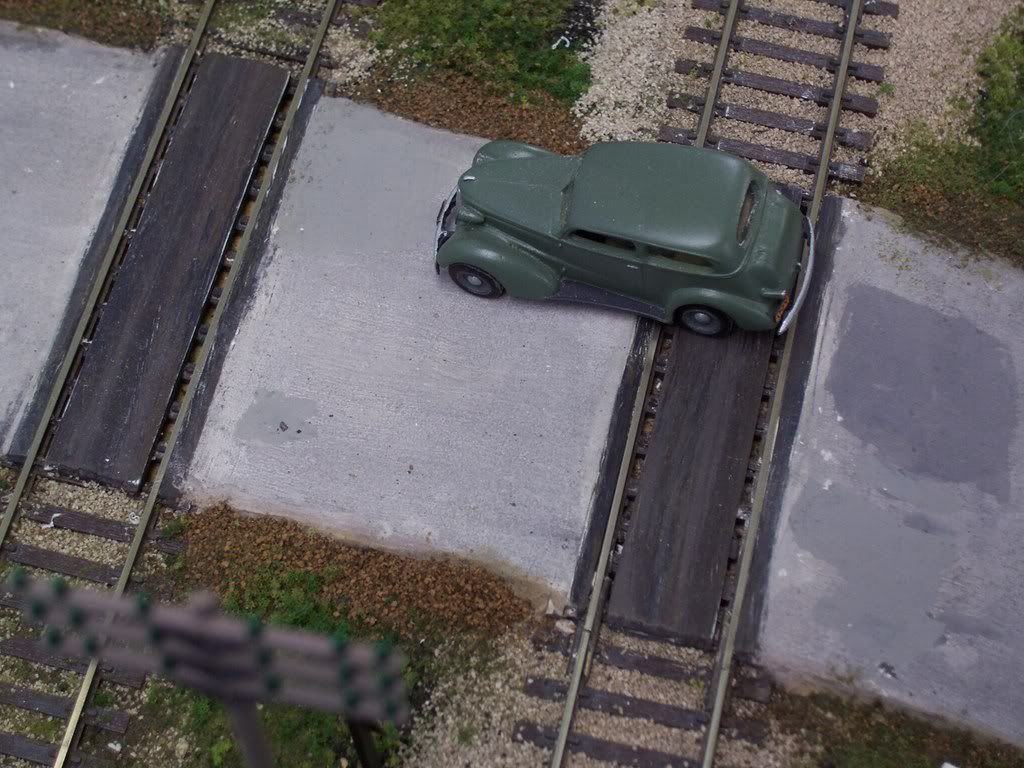There is currently a conversation going on about plaster cloth. I have been doing my scenery using chicken wire covered with paper shop towels. I like the results that I am getting. The question I have when I started I was using plaster with my towels. I didn’t like the working time. I realize there are methods to slow down the working time but I had some joint compound so I thought I would try it. I like the way it works and I cannot see any difference between the two products. Is there a reason that I should not be using the joint compound? I realize this subject was brought up a year or so back but I could not find it and I don’t remember the conversation. Some pro’s and con’s would be appreciated.
Plaster dries to a hard durable “shell” that will be impervious to water. Joint compound will be somewhat soft, used as a “shell” over your wire will not be that strong and will crack, and/or distort with very little force. If you find that it is working out for your scenery, I guess why not. I would recommend sealing the base before continued scenery to help make it a bit more water resistant. Have you tried Durabond? It has a far longer working time than that of plaster and will dry quite strong. It isn’t completely waster resistant and should be sealed/ painted as well.
Hi!
Even though I’m an “old dawg”, I decided to try some of the “new tricks” in building my most recent layout. I normally use plaster, I gave the ready mix joint compound a shot. Well, I can say that they are similar, with the differences being plaster is cheaper, and ready mix JC is less messy. Also, I can control the consistency of plaster, and the set time (add vinegar) to some extent.
I think they both have their place, and if I were you I would give each a try. My gut is to use plaster, but I would not rule out alternatives.
Joint compound has worked for me, albiet I haven’t covered a large area.
I add acrylic paint to get the color needed such as grey for roads and brown for earth. Some times I thin it a bit with water so it spreads easier.
If applied thick it will crack but they can of course be filled in with more compound or scenery material. Some cracks can be desirable depending…
Bob
I use joint compound for streets and roads, and also for the “concrete” floor of my roundhouse. I apply a coat and, when it’s dry, sand it, then paint. I’ve also used it over foam core board to represent stone on my depot…again, I sanded it (just a little, in order to leave some “stone” texture) and then scribed mortar lines. Also am using it over a foam core shell for the walls of a concrete-sided warehouse, which I’ll sand smooth and paint concrete color. Joint compound is very durable for these purposes and adheres well to the foam core board.
Is there any reason joint compound cannot be applied in layers to thicken the floor so to speak?
On some of my past ISLs I used both for service roads crossings and joint rail/truck docks but,I prefer joint compound for such things.
BTW…Joint compund comes in small containers as well…
I used joint compound on a “test module” over a base of masking tape/cardboard strips and another base of pink foam. It worked and when I demo’ed it much later, it had a similar durability to plaster. As one of the prior posters mentioned though, don’t apply it in layers more than 1/8 of an inch or it will crack when drying. It does take a couple of days to dry in the humidity of the midwest during spring. Not sure where you are or when you plan on using it but heat and humidity seem to delay its hardening.
Good morning Roger
If I may chime in?
I have tried almost everything at one time or another. (Carpenter turned modeler)
For thin application joint compound works quite well, as in dry walling and road ways. As said don’t use too thick. If you need thick layers try layering in some joint tape. That will usually keep the joint compound from cracking.
Plaster drys fast while mixing, and is hard to cut or trim. IMO
Hydra Cal makes good casting.
My favorite though is light weight Hydra Cal. It cuts or shapes easily, is lighter in weight, and leaves a natural less than smooth surface when applied with a spatula. I even use it to mold rock castings. I attach the castings to the surface with it and smooth between the the casting’s with more LHC.
When I started I didn’t realize the wide range of products you could use (or miss use) [:-^] in the pursuit of model railroading.
Do what works for you.
Happy trails.
Lee
I have a dumb question, when you are talking about “plaster”’ are you talking plaster of paris or plaster as in the days of lath and plaster? Sorry, I’m new at this stuff.
My plaster is labeled “plaster of paris” I had to go look. [:-^]
Have fun.
Lee Double post, where is DELETE?
My plaster is labeled “Plaster of Paris”. I had to go look. [:-^]
Have fun.
Lee
Thanks
Ken
I’m just getting into working with plaster to create landforms and mold and color rocks, so I don’t pretend to be an expert.
However, something I’ve heard or read that hasn’t been addressed so far is that joint compound doesn’t take stains (a) at all, or (b) as well as plaster. I enjoy working with plaster and so will stick with it, but as to joint compound taking color–do I remember the caution correctly?
Rick Krall
Ive used the fast setting, powder drywall mix that builders use for drywall corners. It has a work time of about 45 min and dries harder than normal drywall compound. Takes paint well, and I dont sand it of course.
While pre-mixed joint compound is easy to use, it’s best applied in thin coats. It’s also very soft, so if you set your camera on the layout where you’ve got roads, it scratches quite easily.
I much prefer Durabond patching plaster: it comes in various setting times, from 20 minutes to two hours, denoted by a number following the product name, which represents the setting time in minutes. Once fully-cured, it appears to be impervious to water, and is extremely hard and strong. I use it over aluminum window screen for all my basic scenery, and to rough-in road surfaces, too. To finish the roads, a skim coat of drywall compound is sometimes used, but it requires periodic touch-ups due to cameras and the occasional mis-placement of tools.


Wayne